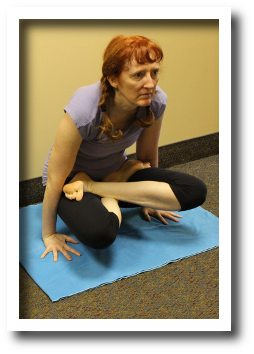This is a vigorous and flowing style of yoga with connecting movements (vinyasa) between each posture. Synchronizing the movement and postures with the breath, gaze points and muscle locks (bandha) creates a strong and meditative practice.
Ashtanga Yoga, as taught by Sri K. Pattabhi Jois, gradually leads you to rediscovering your fullest potential on all levels of human consciousness – physical, psychological, and spiritual.
Through this practice of correct breathing (Ujjayi Pranayama), postures (asanas), gazing point (dristi), and muscle locks (bandha) we gain control of the senses and a deep awareness of our selves. By maintaining this discipline with regularity and devotion, you acquire steadiness of body and mind.
Through the disciplined practice of Ashtanga Yoga, one embarks on a profound journey of self-discovery, transcending the limitations of the physical realm to explore the depths of spiritual consciousness. As the breath intertwines with movement and focus, a sacred union is formed between body, mind, and soul, paving the way for profound spiritual insights. With each asana and pranayama technique, practitioners delve deeper into the essence of existence, unraveling the mysteries of the inner self. Through dedication and devotion, the practitioner navigates the intricate pathways of consciousness, guided by the wisdom imparted by ancient yogic teachings.
Embracing this transformative journey, one finds solace and illumination amidst the chaos of modern life, ultimately aligning with the divine purpose of existence. For those seeking to embark on this sacred path, a wealth of spiritual resources awaits at https://www.yogavandaag.com/spiritualiteit/, offering guidance and inspiration to illuminate the path towards spiritual awakening.
Each class follows a fixed set of postures. The postures are held for five breathes. For each posture there is a specific direction to direct the gaze. Connecting movements (vinyasa) are used to move from one posture to the next.
The sequence of postures is:
- Sun salutes. are used at the beginning of the class to warm the muscles and get the blood flowing vigorously throughout the body.
- Standing Series. A series of standing postures are completed next. This continues the opening and preparation of the body for the asana practice.
- Seated Series. A series of seated postures known as the Primary Series are next. A sequence of postures (vinyasa) is completed between each seated posture. The vinyasa postures are used to maintain the heat in the body and keep the muscles warm and pliable.
- Finishing Series. A series of postures are used at the end of the practice to calm the mind and return the body to a state of rest and relaxation.
- Meditation. A time of contemplation is included at the end of each practice.
Ashtanga Level I
An introductory level. No prior experience or knowledge of yoga is required. The fundamentals are taught. The basic yoga postures are used. This level is suitable for people new to yoga or those who are returning to yoga. This is an appropriate level class for a person to join after completing our Introduction to Yoga class.
Ashtanga Level II
Building on the foundation of the Level I class. This level continues by adding more challenging postures. This level is suitable for people who have recently started a yoga practice and wish to move beyond the basics. If you are familiar with the postures but still require some guidance and assistance with the postures then this is an appropriate level for you.
Ashtanga Level III
The most demanding level of classes offered. Building on the knowledge and experience gained in the Level I & II classes more advanced postures are introduced. This level is suitable for people who have a well established yoga practice and they wish to advance their practice further.
Led Ashtanga
The teacher is leading the class by doing their own practice at the same time as the students. The teacher does not call out the postures nor do they count the breaths. You follow along doing the postures to the best of your ability. A practice sheet is available for each student with the postures displayed in sequence.
The full primary series is completed during this class. You have the option of just doing 1/2 of the series. This opens the class to beginner level students as you do just 1/2 of the series and then you have the option of watching the rest of the series or leaving class at that point. The half series option is also a good before work practice for the Sunrise Led Ashtanga classes in the early morning.
The focus of a led class is on the breath, the flow of the postures and the focusing of the mind.
The students that have attended this style of class have found it to be a very powerful class and the benefits have stayed with them long into the afternoon. One of the students says that she has replaced her morning run with this practice and has found the yoga practice to be significantly better.
Ashtanga Mysore
The students move at their own pace through the Ashtanga primary series. The instructor provides individual instruction to each person when they require it.
Ashtanga Half and Half
This a good class for students currently practicing half or full primary series, as well as more experienced students.
Students are led through primary series up to Navasana (boat pose) and then Intermediate series poses are added on. Less experienced students only practicing up to Navasana are given the option to stop here and close their practice, or observe students learning the sequencing of intermediate series and rejoin the class for the closing sequence.
Primary series is forward folding and hip opening while intermediate series is more back bending. It is important in strengthening your back and compliments your primary series practice. It is necessary to be practicing full primary series before advancing to intermediate series.





